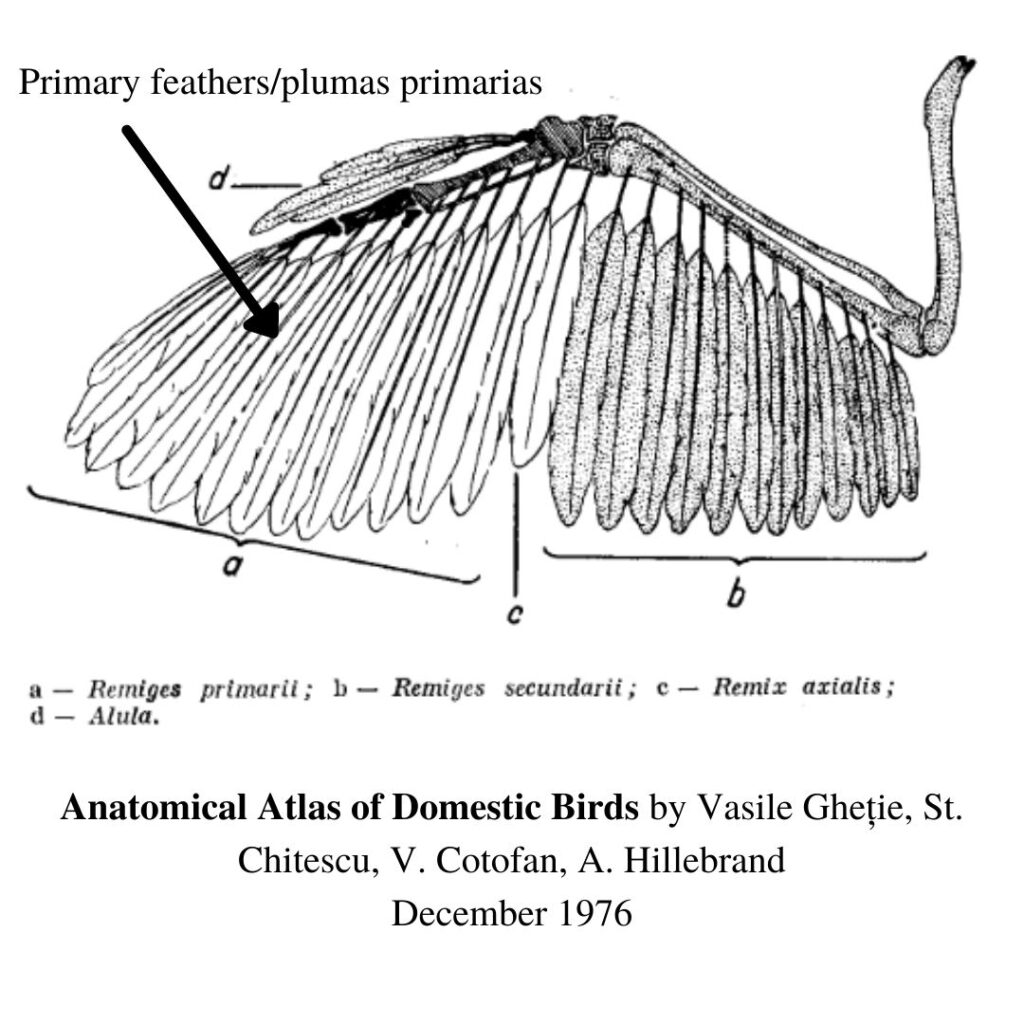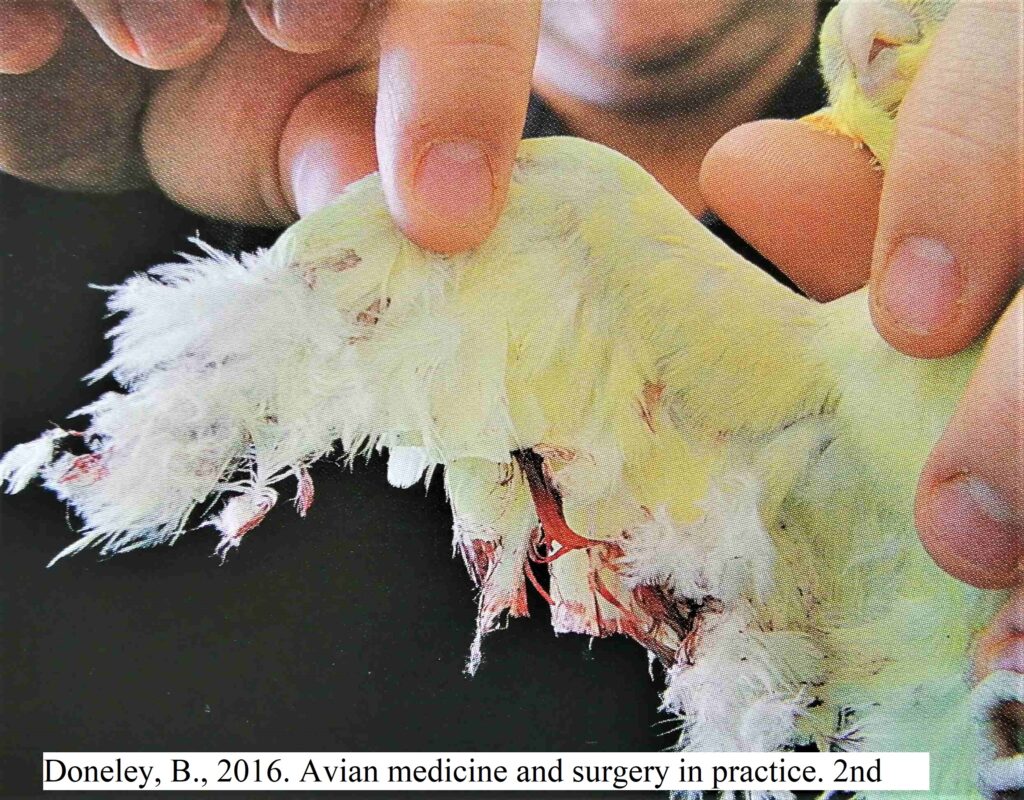This website uses cookies so that we can provide you with the best user experience possible. Cookie information is stored in your browser and performs functions such as recognising you when you return to our website and helping our team to understand which sections of the website you find most interesting and useful.
Wing clipping: why you should not do it
Wing clipping or wing feather clipping is a procedure in which we clip the primary feathers on both wings to reduce the ability of the bird to fly, reducing its height and speed. It is not recommended eliminating the ability of the bird to fly completely, as this will lead to physical damage to the bird, as we will discuss later here. The owners should always be aware that, because the bird will still be able to fly, they should still be careful when bringing the birds outside and to use a harness or similar.
Who and How:
The procedure is mostly performed in parrots, because they are birds that still can manage to move around and climb without flying. Other kinds of birds would be basically limited to stay in the cage or the stand where you leave them, as they could not move from there. This procedure is performed as well in hens and turkeys to avoid them climbing to the fences in the backyards. Despite the fact that they can’t fly, they still can jump quite high flapping their wings, so with the clipping we could reduce this potential and therefore avoid them getting out of the enclosures. Other backyard birds, like ducks and geese, or birds in zoos sometimes have this procedure because the owners don’t want them to fly away.
The procedure itself consists of the careful trimming of the primary feathers of BOTH wings. It is not recommended clipping just one wing, as the unbalanced flight causes the bird to struggle to land and can lead to physical damage to the quill, legs or wings. It is recommended to clip just caudal to the covert feathers, so we have less chances to damage the skin and to clip new growing feathers. Some people like to leave the two or three distal feathers intact, so the wings look more normal when closed. We should restrain the bird very carefully, specially small birds, to not cause any damage or fractures. Clean and sharp scissors should be used. It is important to cut the feathers clean and nice, so the bird will not want to remove the feathers afterwards.
I want to point out that this procedure is not permanent! Feathers will grow again to normal length when the bird has a moult, so we should be carefully monitoring the wings in case the bird starts to fly again.

When:
I do not recommend wing clipping as a routine procedure in birds, especially in flying birds. In non-flying birds, like we discussed already in hens and turkeys, it is a procedure that, if performed carefully and by someone experienced, can reduce potential problems with the birds if kept in an open-top enclosure. These birds have the tendency to jump onto neighbours gardens quite frequently, and sometimes could be a no-so-friendly dog on the other side of the fence. In flying birds, every case should be assessed individually, and we should balance the risks and the benefits for the bird, but, in my experience, most of the time the risks outweigh the benefits.
Benefits and risks:
Potential benefits:
- Easy to handle: not the same as a good relationship with the bird.
- Less risk of scapes
- More control over environment (where the bird can reach)
Potential risks of the procedure:
- Stress (birds are very sensitive to stress)
- Damage on restraint (feather damage, wing fractures …)
- Bleeding (if cut a growing feather or the skin)
- Damage to the handler (bites, scissor cuts or scratches)
- Pulling the feather out instead (painful!)

Potential risks derived from the wing clipping:
- Physical damage: if the bird is used to flying, it will still try to fly the first few days, which can cause damage on a bad landing.
- Behaviour changes: due to the fact that the bird can’t fly away, they will feel more insecure, making them more scared and sometimes reacting with aggression when they can’t avoid the confrontation.
- Loss of trust or damage to the owner-pet relation: secondary to the previous point, the owners will interact less with the bird or will change the approach, so even if the bird would spend more time out of the cage, the interaction with the family will be reduced in quality.
Conclusion:
As you could see, it looks like in most of the cases, the cons are much more than the benefits. This is a procedure that we still can see in some zoological collections, where they want you to be able to interact with the birds (usually parrots), or they just want the birds to be in nice open displays so don’t want them to fly away, like flamingos, swans, herons and other birds. In my opinion, this is not fair for the birds and not acceptable from a welfare point of view (always referring to birds that are able to fly). I believe that the most beautiful condition of birds is flight, that is why they are as they are. So impeding them to make use of that condition will cause some problems as we have said, but overall, is against one of the freedoms that we discussed on the “What is an exotic pet?” post, they can’t display their natural behaviour of flying.
Don’t feel bad if you have ever done this, but please, let your birds fly, even if just inside the house, and you will see how happy they are when they do it.
How do you feel about wing clipping? Do you think differently? Let me know, and don’t forget to follow me on Instagram (@theexoticvetden) if you don’t yet. Thank you for reading this!
References:
- Doneley, B., 2016. Avian medicine and surgery in practice. 2nd ed.
- Meredith, A. and Johnson-Delaney, C., 2010. BSAVA manual of exotic pets. 5th ed.
